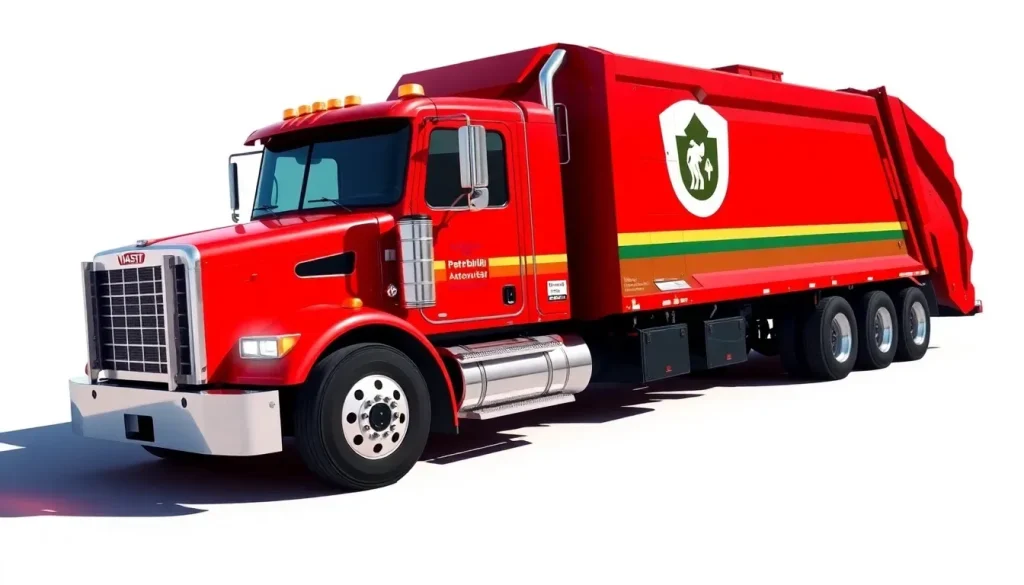Peterbilt delivers Model 567 milestone to Waste Management

The trucking industry is a cornerstone of the economy, providing essential services that keep goods moving across the country. Among the leading manufacturers in this sector, Peterbilt has made a name for itself with its innovative designs and robust vehicles. Recently, the company achieved a remarkable milestone with the delivery of its 100,000th Model 567 truck, a significant achievement that not only highlights their manufacturing prowess but also their commitment to sustainability and customer satisfaction.
What makes the Peterbilt Model 567 special?
The Peterbilt Model 567 stands out in the realm of heavy-duty trucks due to its versatility and advanced engineering tailored for severe-duty applications. Designed for challenging environments, the 567 is particularly well-suited for refuse collection and other demanding tasks.
Some of the defining features of the Model 567 include:
- Durability: Built with high-strength materials, the Model 567 is designed to withstand the rigors of heavy usage, ensuring longevity and reliability.
- Customizability: The truck offers multiple configurations, allowing businesses to tailor it to their specific operational needs, whether for refuse, construction, or other services.
- Fuel Efficiency: Engineered for optimal performance, the Model 567 incorporates advanced technology that enhances fuel economy, reducing overall operational costs.
- Comfort and Ergonomics: The cab design focuses on driver comfort, featuring an intuitive layout and modern technology to facilitate a better driving experience.
What class is a Peterbilt 567?
The Model 567 falls into the Class 8 category of trucks, which includes vehicles with a Gross Vehicle Weight Rating (GVWR) exceeding 33,000 pounds. This classification makes it ideal for heavy-duty applications such as:
- Refuse collection
- Construction transport
- Heavy hauling
- Utility and municipal services
By belonging to this class, the Model 567 is recognized as a robust option for businesses that require a powerful truck to handle substantial loads and challenging terrains.
What is the difference between a Peterbilt Model 367 and Model 567?
Both the Model 367 and Model 567 are designed for heavy-duty applications, but they exhibit distinct differences that cater to various business needs.
Key differences include:
- Design Purpose: The Model 367 is typically used for vocational purposes such as construction and logging, whereas the Model 567 is more versatile, suitable for refuse and other severe-duty applications.
- Frame Options: The Model 567 offers a wider range of frame lengths and configurations, making it more adaptable for specific uses.
- Technology Features: The Model 567 integrates more advanced technology and features, enhancing efficiency and comfort for operators.
These variations allow customers to select the truck that best meets their operational requirements while benefiting from Peterbilt's quality and performance.
What are the models of the 2019 Peterbilt trucks?
The 2019 lineup from Peterbilt showcases a range of models that cater to diverse applications, from long-haul trucking to specialized vocational tasks. Notable models include:
- Model 579: Ideal for highway applications, offering excellent aerodynamics and fuel efficiency.
- Model 567: As discussed, perfect for heavy-duty tasks and refuse collection.
- Model 389: A classic model known for its iconic styling and customizable options.
- Model 337: A medium-duty truck suited for various applications, including delivery and construction.
Each model is engineered with advanced technology and features tailored to optimize performance, safety, and driver comfort.
The role of partnerships in Peterbilt's success
Peterbilt’s collaboration with industry leaders, such as Waste Management, underscores its commitment to providing tailored solutions. Waste Management recently received the milestone 100,000th Model 567 truck, showcasing the trust that major companies place in Peterbilt's offerings.
According to Todd Poste, vice-president of supply chain and chief procurement officer at Waste Management, the partnership has been essential in achieving their environmental goals and operational excellence. This collaboration emphasizes the importance of strategic partnerships in driving innovation and improving sustainability in the trucking industry.
For those interested in learning more about the Model 567 and its applications in refuse management, the following video provides valuable insights:
Conclusion
Overall, the Peterbilt Model 567 represents a significant achievement in the trucking industry, combining advanced engineering with a focus on sustainability and customer satisfaction. Its recognition as the 100,000th unit delivered to Waste Management highlights its popularity and effectiveness in heavy-duty applications. As the trucking industry evolves, Peterbilt continues to lead with innovative solutions that meet the demands of modern transportation.




Leave a Reply